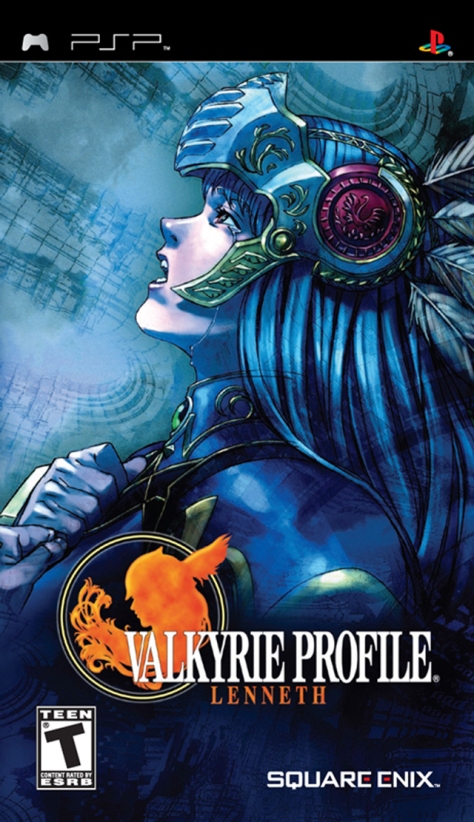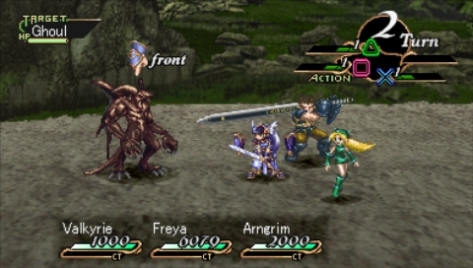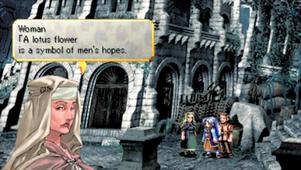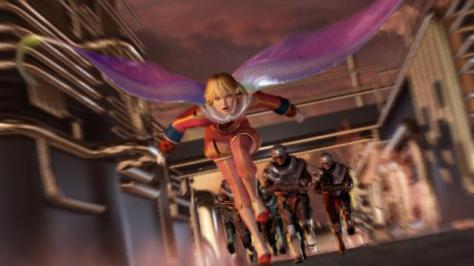
http://www.joystiq.com/2013/03/15/remembering-my-favorite-rpg-valkyrie-profile/
I’m going to approach this article a little differently than I usually do. The above is a link to a Joystiq article by Kat Bailey wherein she discusses her love for Valkyrie Profile. Coincidentally, I had quit playing Valkyrie Profile: Lenneth, the PSP remake, only a few days before she posted this article. After spending about thirteen hours with the game, I decided it wasn’t for me. Today, I’m going to riff off her article and try to get the core of what exactly it was about this game that didn’t appeal to me.
What Kat really dives into first is the combat system. She describes it as it is – “fun, fast, and interesting to look at” and I agree, but more so when she considers it serviceable. She doesn’t linger on it long and neither does the game. It’s a combat system that lacks much depth. In my time with the game I kept waiting for combat to expand and it never really did.
Towards the end of my tryst with the game, I began to see promise in the form of new skills. These augmented my roster of characters in many ways, but why didn’t I see more of these in the first third of the game? It would’ve given me more desire to customize my crew and maybe look forward to battles. There were many passive skills that increased stats with many more that seemed to only impact my ranking for sending characters to Asgard – a concept that’s barely discussed. The combat and support skills that began appearing after a dozen hours, I wish, would’ve appeared sooner.

As she continues, Kat begins discussing the role of the plot in the game and the dueling narratives. In regards to the overall story of Ragnarok, it’s very straightforward. Lenneth is on a quest to recruit einherjar to defend Asgard in the impending end of days. The subplots of Lenneth’s past and deeper truths of other important concepts in the game are present, and intentionally obtuse. Kat describes this subplot information as “bad game design” as it’s there for the player to experience but the main narrative misleads the player. I highly agree and would add that the game really doesn’t explain much about the subplot.
I do like the concept of the game misleading the player to believe an untruth, but I find it curious that these subplots are present, but there isn’t anyone advocating these paths to the player. I guess the player is expected to stumble upon these encounters, which isn’t guaranteed because of the game’s structure. Granted, in my time spent I only had a few encounters that were related, but they explained nothing! I suppose that’s to be expected in the first third of the game – questions, not answers – but, honestly, barely anything is explained in this game.

Perhaps, the biggest detractor to Valkyrie Profile was its lack of explanations in regards to pretty much anything be it a gameplay mechanic or story beat. That being said, I was dissatisfied with the lack of attention devoted to the, admittedly, large roster of characters. Besides the initial recruitment cutscene, there was little attention paid to them again. I also felt limited by the game’s structure. Divided into chapters and further into periods, entering towns and dungeons became a commodity as I did cost benefit analysis to determine whether or not to take a certain action. After a few hours though, I didn’t really want to explore because towns offered me nothing and dungeons were hardly any better. The combat was unimpressive in the first third of the game as well. So ultimately it was a combination of EVERYTHING that left me ambivalent towards seeing how Ragnarok played out.



